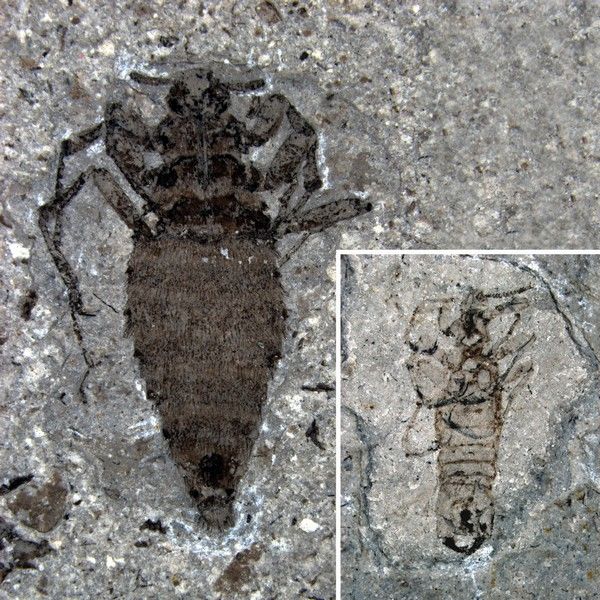
Giant fleas from the Middle Jurassic of Daohugou, China
Professor HUANG Diying from Nanjing Institute of Geology and Palaeontology, Chinese Academy of Sciences and his colleagues make an important progress in Palaeoentomology recently. A paper entitled “Diverse transitional giant fleas from the Mesozoic era of China”has been published online in Nature on the 29th, February.
Fleas, including circa 2500 recent species or subspecies, are one of the dramatically specialized group of insect lineages, with reduction of wings, laterally-flattened body, and small size (usually 1-3 mm long). Fleas are ectoparasiticinsects specialized for feeding on the blood of mammals (including human beings) or birds. Fleas are difficult preserved as fossils like other ectoparasitic insects. Definitive fossil evidence of fleas has been largely confined to Cenozoic amber, and they are of extant forms. Therefore, the evidence suggesting the origin and early evolution of fleas has been lacking.Hitherto, only one record of fossil flea Tarwinia has been described from the Late Cretaceous of Australia (ca. 120 Ma). However, its affinity remains highly controversy.
In recent years, HUANG Diying has found several giant flea from the Middle Jurassic Daohugou biota (ca. 165 Ma) at Ningcheng Couty, Inner Mongolia and and the Early Cretaceous Jehol biota (ca. 125 Ma) at Beipiao City, Liaoning Province of China, which provides new insights into the origin and early evolution of fleas and the adaption of hosts. This find traced back the earliest occurrence of fleas (Order Siphonaptera) at least for 40 million years.
These Mesozoic fleas are of great body sizes, approximately15 mm in length, and some longer than 20 mm. As the extant fleas, the ancient females are larger than males. For example, a flea species from Daohougou is 14 mm for female and only 8 mm for male. They are wingless insects, but more or less dorso-ventrally flattened, their antennae are short and compact with more antennal segments (16-19 segments) than extant ones (11 segments); they have a very long piercing siphonate mouthparts, elongate legs armed with various ctenidia, but its hind legs are not jumping type as in Recent fleas, abdomen covered numerous posteriorly-directed setae; male genitalia large and exposed.
New Mesozoic fleas with very long piercing mouthparts suggest a resemblance to some Mesozoic siphonate mecopteran, which supports the hypothesis that fleas are derived from Mecoptera.
By contrast the Tarwinia, the new Middle Jurassic and Early Cretaceous fleas armed with various ctenidia on legs and numerous posteriorly-directed setae on abdomen, indicating an adaption to hosts with hairs or furs. From the same period, a number of mammals have been described, but they are normally of small body size. If they are hosts for ancient fleas, the fleas should have been hidden in their nests. Nevertheless, the long siphon of fleas is obviously able to pierce the skin of feathered dinosaurs, so this is also a possibility. In addition, a peculiar insect from the Early Cretaceous of Russia, Saurophthirus, was suggested as an ectoparasitic insect for pterosaur. We suggest it is also a specialized flea. The above evidence indicates Mesozoic fleas have already display obvious specialization for adapting to different hosts.
This research was financially supported by National Natural Science Foundation of China, Ministry of Science and Technology of PRC, Chinese Academy of Sciences, and State Key Laboratory of Palaeobiology and Stratigraphy.
References: Huang, D., Engel, M. S., Cai, C., Wu, H. & Nel, A. Nature http://dx.doi.org/10.1038/nature10839 (2012).
Download:
